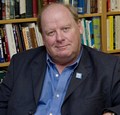“Appreciate the unforeseeable,” cautions Steve Conrad when reflecting on the 2015 Drought

For British Columbians, 2015 was the year of the great drought, dwindling snow packs, melting glaciers, beleaguered salmon runs and a costly forest fire season, followed by windstorms and heavy rains. “Appreciating the unforeseeable means we should be prepared to reduce water use, consider alternative water supplies, capture any rain we do receive, and protect vulnerable ecosystems and important water uses during drought periods,” states Steve Conrad.





